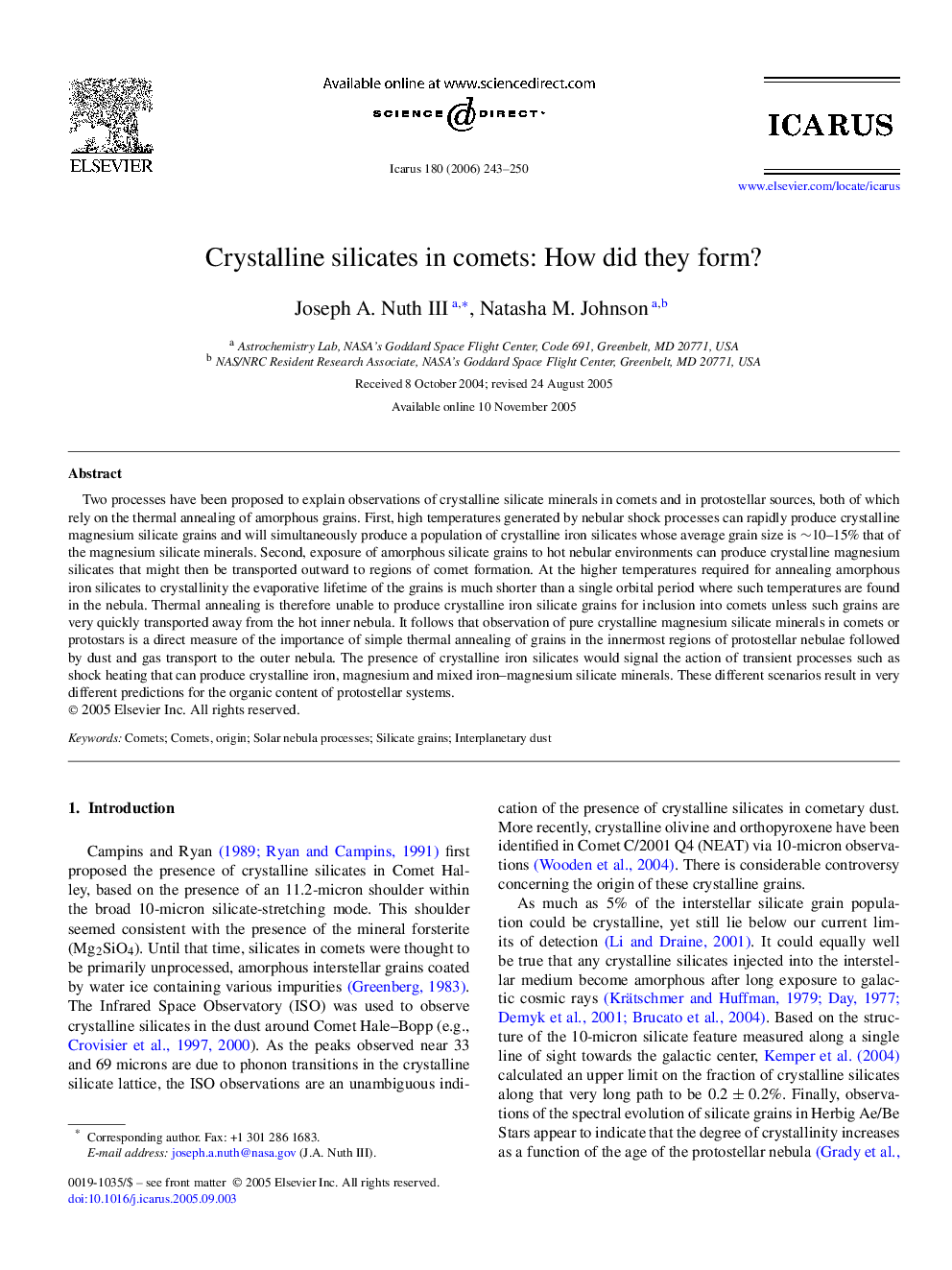| Article ID | Journal | Published Year | Pages | File Type |
|---|---|---|---|---|
| 1776033 | Icarus | 2006 | 8 Pages |
Two processes have been proposed to explain observations of crystalline silicate minerals in comets and in protostellar sources, both of which rely on the thermal annealing of amorphous grains. First, high temperatures generated by nebular shock processes can rapidly produce crystalline magnesium silicate grains and will simultaneously produce a population of crystalline iron silicates whose average grain size is ∼10–15% that of the magnesium silicate minerals. Second, exposure of amorphous silicate grains to hot nebular environments can produce crystalline magnesium silicates that might then be transported outward to regions of comet formation. At the higher temperatures required for annealing amorphous iron silicates to crystallinity the evaporative lifetime of the grains is much shorter than a single orbital period where such temperatures are found in the nebula. Thermal annealing is therefore unable to produce crystalline iron silicate grains for inclusion into comets unless such grains are very quickly transported away from the hot inner nebula. It follows that observation of pure crystalline magnesium silicate minerals in comets or protostars is a direct measure of the importance of simple thermal annealing of grains in the innermost regions of protostellar nebulae followed by dust and gas transport to the outer nebula. The presence of crystalline iron silicates would signal the action of transient processes such as shock heating that can produce crystalline iron, magnesium and mixed iron–magnesium silicate minerals. These different scenarios result in very different predictions for the organic content of protostellar systems.
